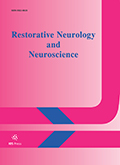Authors: Wellejus, Anja | Elbrønd-Bek, Heidi | Kelly, Nicholas M. | Weidner, Morten S. | Jørgensen, Signe H.
Article Type:
Research Article
Abstract:
Purpose: Naturally occurring isothiocyanates (ITCs) are known to possess chemopreventive and neuroprotective properties. Our objective was to study the synthetic ITC 4-iodophenyl isothiocyanate (4-IPITC) in different models of neurodegeneration. Methods: In vitro, we exposed primary cortical neurons to various insults such as excessive glutamate exposure, oxygen-glucose deprivation, oxidative stress and 1-methyl-phenylpyridinium (MPP+ ). In vivo, experimental autoimmune encephalomyelitis (EAE) was induced in dark agouti rats treated with 4-IPITC in 3 different concentrations (10, 20 and 40 mg/kg), orally for 28 days. In a Parkinson's model, 1-methyl-4-phenyl-1,2,3,6-tetrahydropyridine (MPTP) was injected in mice pretreated with 4-IPITC (5 mg/kg, orally) for 1 week.
…Nest building behavior at day 1, 3 and 6 after MPTP injection was assessed along with dopamine and metabolites, and tyrosine hydroxylase (TH) staining on termination day 6. Results: 4-IPITC successfully reduced cell death in all in vitro assays. Moreover, in two independent neurite outgrowth assays the compound showed neurotrophic properties. In the EAE study, 4-IPITC significantly delayed the day of onset and decreased the cumulative EAE score. Although the number of animals in this MPTP study was limited, 4-IPITC showed potential for dampening toxicity. Conclusions: Taken together, our in vitro findings suggest robust neuroprotective and neurotrophic properties of 4-IPITC, which was confirmed in two in vivo models of neurodegeneration.
Show more
Keywords: 4-iodophenyl isothiocyanate, neuroprotection, EAE, excitotoxicity, reactive oxygen species, MPTP
DOI: 10.3233/RNN-2011-0617
Citation: Restorative Neurology and Neuroscience,
vol. 30, no. 1, pp. 21-38, 2012
Price: EUR 27.50




